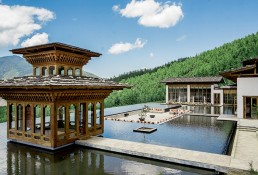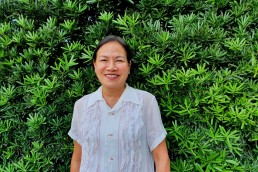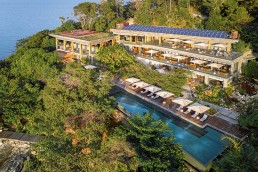REVIEW: Six Senses Bhutan
Six Senses steps into Bhutan with a series of five ambitious lodges firmly rooted in local culture.
Bhutan has been a bucket list destination for many since the landlocked country first opened up to tourism in 1974. Yet despite its growing popularity, hotel development has been slow, and there have been relatively few high-end options for visitors travelling to the Kingdom’s monasteries, dzongs and dramatic landscapes. So Six Senses Bhutan, a new circuit of lodges that connects five western and central valleys – Thimphu, Punakha, Paro, Gangtey and Bumthang – is a highly anticipated and welcome addition.
Created in collaboration with Bangkok-based Habita Architects, the project has taken five-and-a-half years to complete, with each site thoughtfully designed to fully immerse travellers in local culture. “The landscapes and the level of calm and stillness were the reasons why I chose the locations,” explains Dasho Sangay Wangchuck, a Thimphu-born entrepreneur and the brainchild behind the ambitious multi-site hotel. “What I really wanted to stand out were the amazing panoramic views of the towns and temples below, but also the mountains, which are right there in front of you. These valleys are iconic and offer guests the full flavour of the country, and, as a brand, Six Senses truly fits with what Bhutan stands for.”
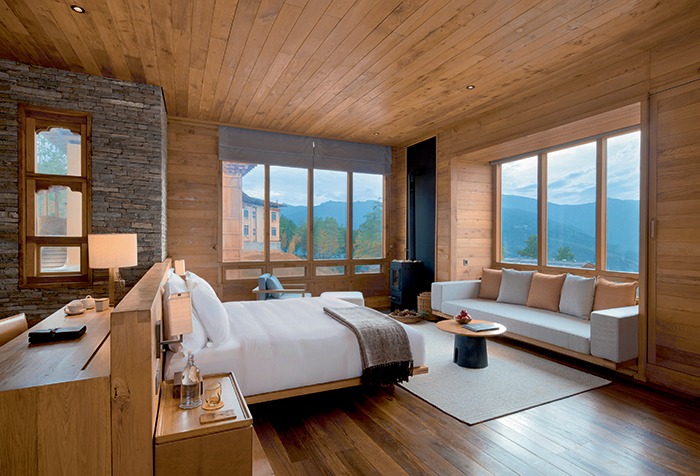
The influence of surroundings is evident in the lodges, with the Six Senses in-house design team referencing the distinct character of each valley in the varying schemes. “We wanted to give guests a different experience at each destination, so for the design concepts we looked at the topography and local life for inspiration,” says Apiwat Anukularmphai, Corporate Creative & Design Director, Six Senses. For instance, the Master Lodge – comprising 20 suites and five villas – is perched on a hillside surrounded by pine trees above Thimphu, the country’s capital. As you enter the main building, which houses the living room, bar and restaurant, and look out of the floor-to-ceiling windows to the valley below, it’s immediately obvious why it has been nicknamed the Palace in the Sky.
White stonewashed walls and a shingle roof take their cues from Bhutanese architecture, while surrounding ornamental pools reflect the clouds above. The cloud motif can also be seen as delicate, swirling art murals by local artists in the simply decorated rooms, where Himalayan hemlock wood has been used for the floor and ceiling. There’s a custom-designed tan leather armchair and matching bedboard below a wood-panelled wall; a traditional bukhari stove that is lit on chilly nights; cosy handmade wool rugs from India; and pops of lemon in the sofa cushions. Other nods to local culture in the public spaces include a mandala of the medicine Buddha inside the entrance to bring out positive energy, a display of everyday objects from teapots to wooden bowls behind the reception desk, and, in the bar, a wave-like ceiling that references the national dress.
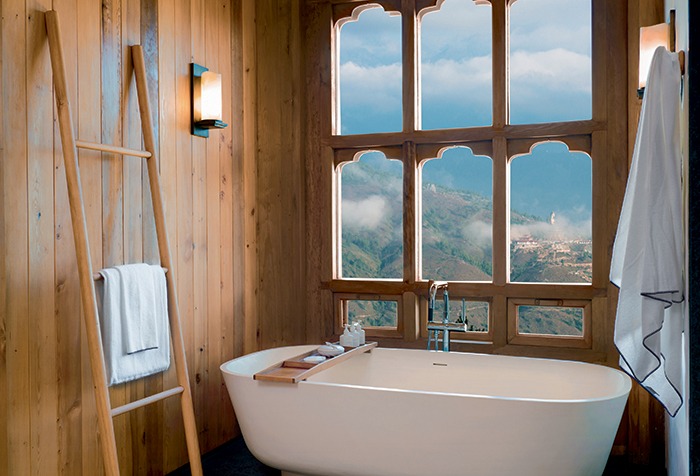
In contrast, at Punakha it’s the farming way of life brought to the fore. The lush valley is full of rice paddies and fields where all kinds of produce are grown, including red chillies, aubergines and carrots, making it a natural starting point for the design. “Since Punakha is famous for its rice, we took the farmhouse as the main idea,” says Anukularmphai of the hemlock wood building which, doubles up as the living room and bar, and cantilevers dramatically over the pool.
The lodge here feels intimate and rustic, with 16 suites split across four buttermilk yellow buildings, as well as three villas from 1,312ft2 to 2,949ft2 that all face the forest-steeped mountains. In the restaurant, an installation of baskets hangs from the ceiling over the help-yourself fruit station, and guests sit in curving rattan chairs by Bangkok-based interior company Corner 43 Décor, looking out to the terrace and the pool beyond. The majority of the furniture across all locations is custom-designed and produced in India.
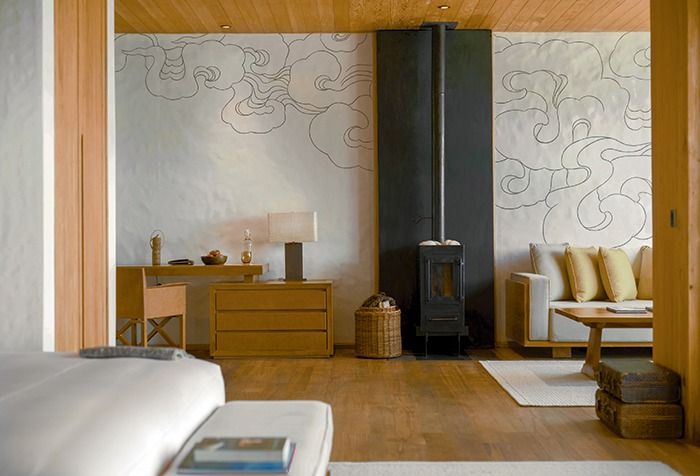
Handcrafted elements are integral to each lodge, but the level of skill involved is perhaps most impressive at Paro, where the stone walls of the main building – influenced by the ruin of a neighbouring dzong – were constructed entirely by hand. “We wanted to replicate the techniques used in the 12th century, so each piece of stone was individually chiselled into the right shape and size, then meticulously stacked,” recalls Anukularmphai.
In the living room, grey sofas are brightened with orange-red cushions alongside tan leather pouffes and abstract graphic rugs in mustard and black, which nod to Tiger’s Nest, the famous monastery built on a sheer cliff face that can be hiked from here as part of a tailor-made itinerary. “For me, the lighting is also important; we have used lots of decorative lights and wall sconces so that it feels homely,” adds Anukularmphai who commissioned Be-Lit, a team of architectural lighting designers again from Bangkok, to undertake the task.
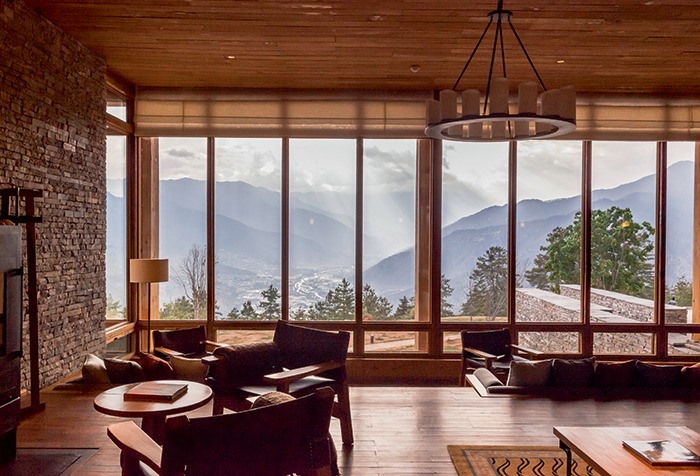
At Paro, a special dining experience on the guests’ last evening is often held in the aforementioned ruin, and there is a small temple with a resident monk where guests can go to meditate – an extension of the wellness offer that Six Senses is renowned for. And, at each lodge, there is of course a signature Six Senses spa, though each with a different focus for sake of variety – at Thimphu it’s health, whereas Punakha focuses on time and Paro specialises in education. As such, guests can move between the lodges for a holistic journey.
“Bhutan has an age-old culture,” says Wangchuck. “We were an isolated pocket for a long time; busy living our own way of life, which was and still is embedded in spirituality.With new age sophisticated travel, everyone is looking for the next experience, and at Six Senses Bhutan we have tried to take this to another level in every way.” Experiences don’t come much more extraordinary than this
Words: Emma Love
Photography: © Courtesy of Six Senses
This review originally ran in Sleeper 86
Related Posts
9 January 2020
Six Senses appoints Yee Pin Tan as Head of Design
11 December 2019
REVIEW: Six Senses Krabey Island
21 January 2015
